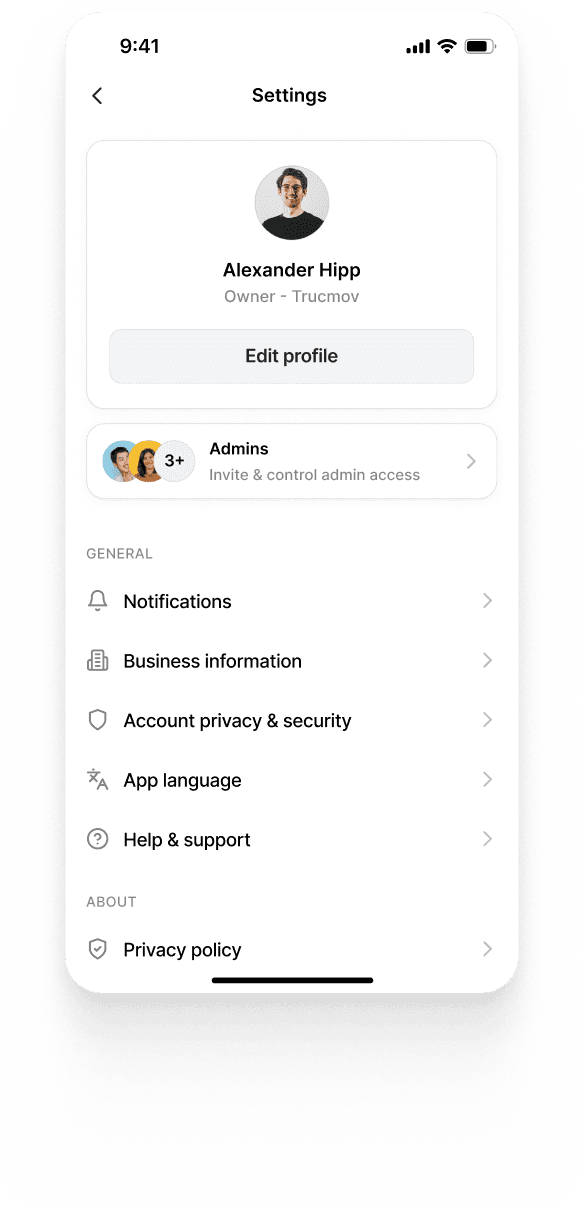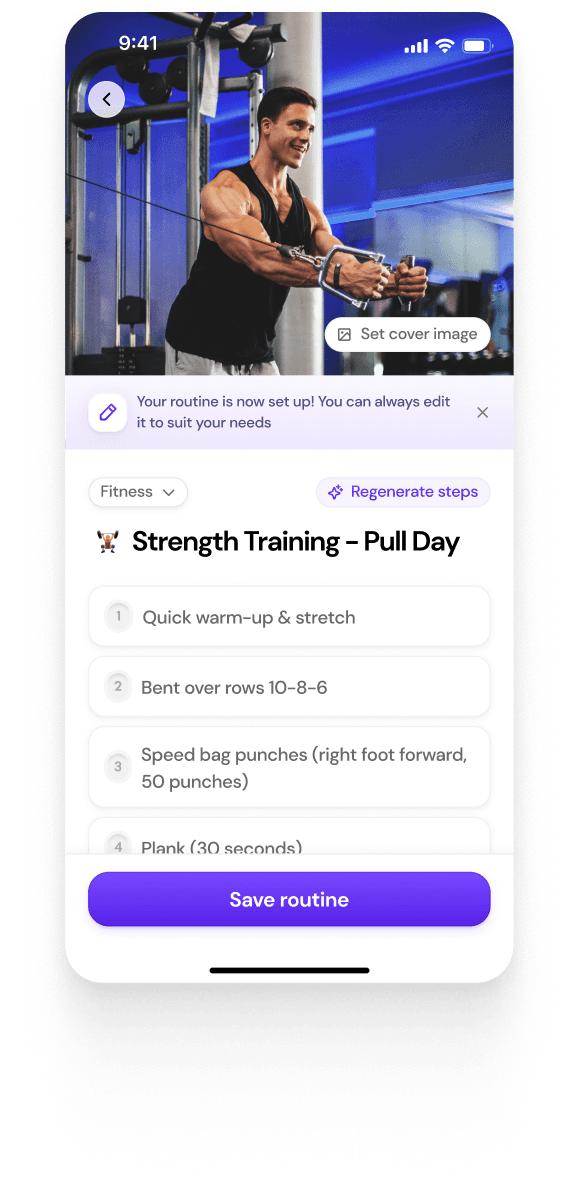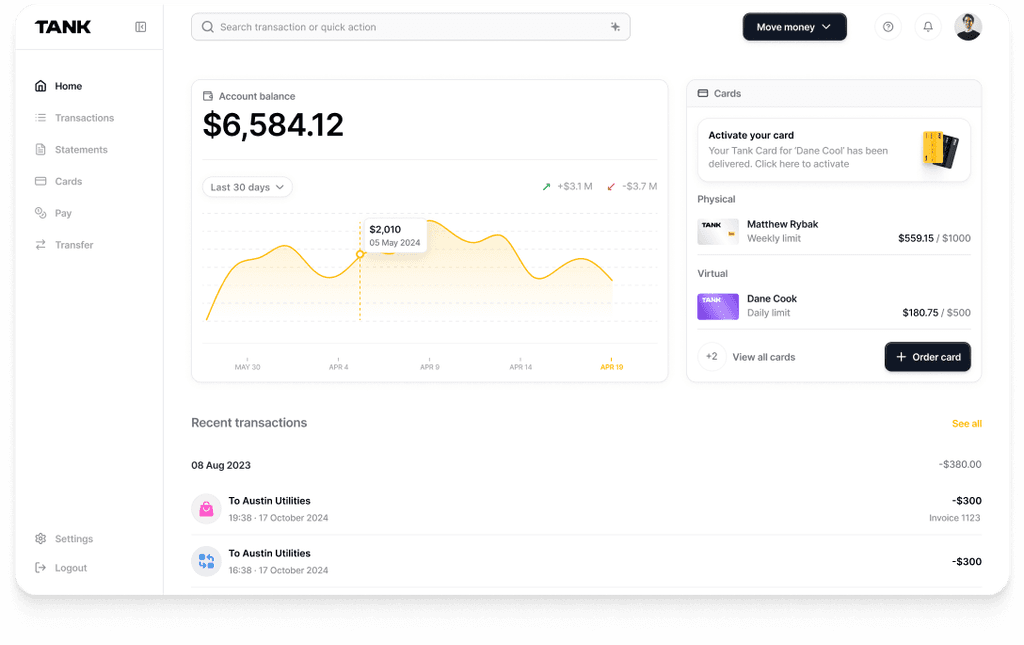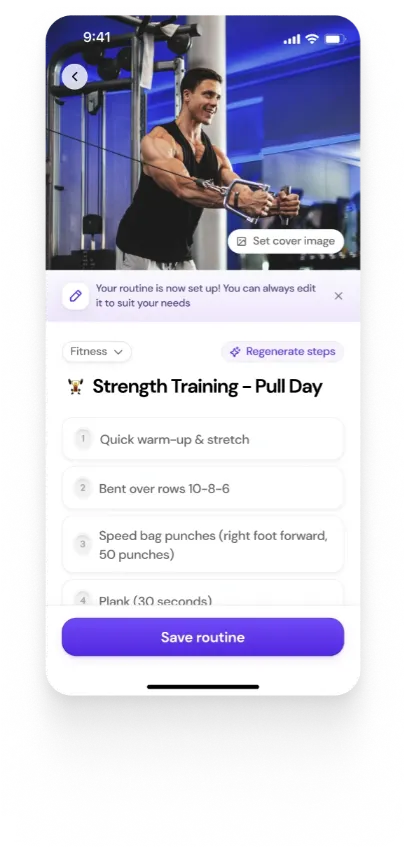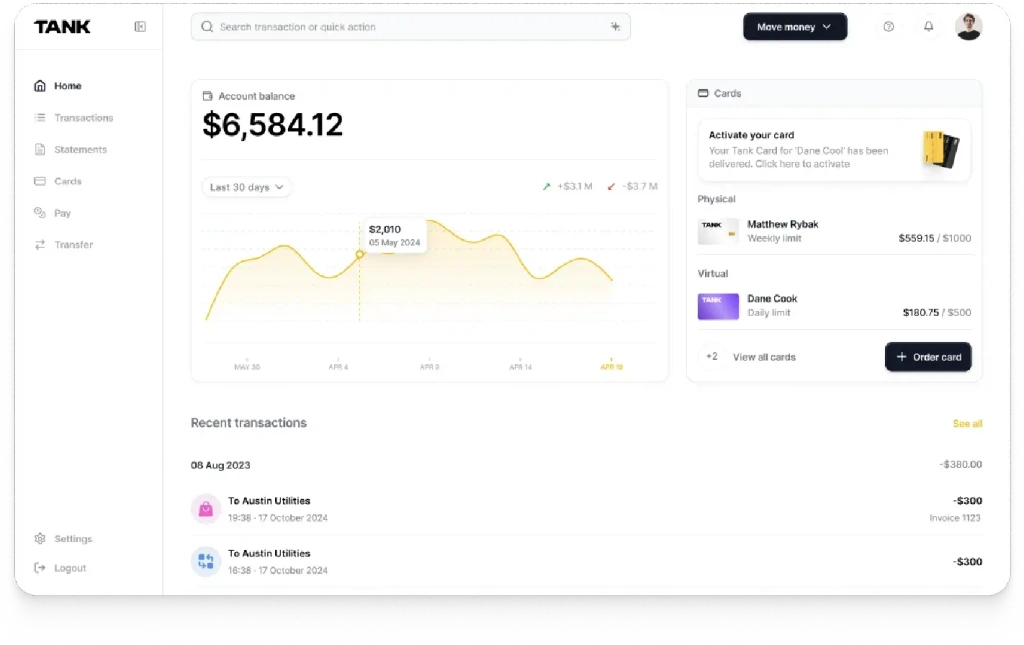Exploring Spending Patterns of SMEs in the US
Summary
This article examines the growing trend of SMEs in sectors like finance, healthcare, logistics, and IT investing in innovative technologies such as AI, cloud computing, and automation. By adopting advanced solutions from firms, SMEs are enhancing operational efficiency, cutting costs, and improving customer satisfaction. These smart tech investments are crucial for SMEs to remain competitive and scale in today’s dynamic markets.
Key insights:
AI/ML Innovation for SMEs: AI and ML drive productivity and cost efficiency through automation, predictive analytics, and enhanced decision-making.
Cloud Computing in Finance: SMEs in finance benefit from scalable cloud solutions, cutting operational costs by up to 30% and improving data access.
Automation in Logistics: Automated fulfillment systems and real-time tracking boost operational efficiency for SMEs in logistics.
Healthcare Innovation: Kalogon’s smart cushions illustrate the role of adaptive, AI-driven solutions in enhancing patient care for SMEs in healthcare.
Cybersecurity in Financial SMEs: Advanced cybersecurity solutions help SMEs reduce risks and ensure compliance, saving significant costs from potential breaches.
DevSecOps & Containerization: SMEs adopting CI/CD and containerization see increased scalability and streamlined software development, improving security and speed.
Introduction
With 99.9 percent of all businesses and over half of the private labor employed, small and medium-sized enterprises (SMEs) are essential to the American economy. SMEs, which number about 28 million and operate in a variety of industries, stimulate economic growth and innovation. In order to boost customer satisfaction, increase operational efficiency, and maintain competitiveness, a sizable percentage of SME investments have been directed toward technology. Important technical developments like automation, artificial intelligence, and cloud computing are changing how these companies operate by enabling them to grow and maximize their resources.
This insight aims to examine the patterns of expenditures made by SMEs in a number of different sectors, such as finance, healthcare, logistics, and transportation. CloudBridge, Acquantuo, and Kalogon are just a few of the notable examples of SMEs utilizing cutting-edge technologies to increase customer happiness, reduce expenses, and streamline operations. This article further explores the cutting-edge solutions these businesses are using, showcasing how SMEs are revolutionizing their industries through smart tech investments.
Defining SMEs
The Small Business Administration (SBA) sets size standards to determine if a business qualifies as small, primarily for government contracting. These standards vary by industry and are based on either the number of employees or the business’s annual receipts. To compete for contracts reserved for small businesses, a company must meet these size standards, which are governed by 13 CFR Part 121. The standards ensure that the business is independently owned, not dominant in its field, and located in the U.S. The SBA calculates the number of employees in accordance with 13 CFR 121.106 and annual receipts under 13 CFR 121.104. Additionally, affiliation rules (13 CFR 121.103) require the inclusion of the employees or receipts of all affiliates when determining size.
Breakdown of Annual Expenditure for SMEs
SMEs in the U.S. have varied annual expenditures across key categories, reflecting their business size and operational needs. Small businesses with no employees generate an average annual revenue of $46,978. For businesses with employees, revenue scales significantly: those with 1-4 employees average $387,000 annually, while those with 5-9 employees bring in $1.08 million. Revenue further increases with company size, reaching $2.16 million for businesses with 10-19 employees, $7.12 million for those with 20-99 employees, and up to $40.78 million for companies employing 100-499 people. These figures highlight the significant revenue potential as small businesses grow in size. For this analysis, we will use an average revenue of $5 million for SMEs to break down their spending based on common categories, where direct figures are not available.
1. Salaries and Wages
Employee compensation is the largest expense for most SMEs. According to Forbes, on average, about 70% of revenue goes toward salaries, benefits, and related costs for labor. For a business with $5 million in revenue, this translates to around $3.5 million spent annually on salaries and wages.
2. Technology and Automation
A Beaming survey revealed that in 2024, UK SMEs plan to spend over £60.3 billion on new technologies, with significant investments in automation and AI. The breakdown is as follows according to different sizes of businesses:

While these businesses were surveyed in the UK, the trends are likely to follow in the US. For US SMEs, the average technology spend is between $10,000 and $49,000 annually. There is a big focus on infrastructure (getting laptops and other computing equipment), and a large portion of businesses indicate a focus on customer service technology.
3. Marketing and Advertising
For a company with $5 million in revenue, marketing spend could range from 5-10% of annual revenue, depending on growth goals and industry standards. This means such a company should allocate $250,000 to $500,000 annually for marketing. It is a general rule of thumb for B2B businesses to spend about 2-5% of their annual revenue on marketing, and for B2C companies to spend slightly higher. For aggressive growth, it might push toward the higher end, while for steady, established businesses, staying closer to 5% could suffice. This budget should cover various channels including digital advertising, content creation, social media, and customer outreach to maximize returns on investment. Past campaigns should also be analyzed to determine the best path forward. Over 83% of businesses now use social media for marketing, likely due to the value of pay-per-click platforms.
4. General Operating Costs
General operational costs, which include utilities, rent, and day-to-day business expenses, can vary but in general account for another 15-20% of SME revenue. For a company with $5 million in revenue, this results in annual spending of $750,000 to $1 million. For SMEs where inventory is stored, this takes up a major portion of spending, going as far as 25-35%, though it translates into revenue down the line. This may indicate why drop-shipping is becoming an increasingly popular choice - where no inventory storage is required and supply is gathered once a user order comes in.
5. Compliance
Depending on what the business is dealing with, it might also require compliance certification fees. For example, B2B SaaS businesses might want to get the SOC 2 audit report. For SOC 2 Type 1 certification, which evaluates security controls at a specific point in time, small to midsize companies can expect audit costs ranging from $7,500 to $15,000. For SOC 2 Type 2, which assesses controls over a period (typically 3 to 12 months), the audit costs are higher, averaging between $12,000 to $20,000. The increased cost is due to the auditor evaluating both the design and effectiveness of the controls over time. These do not factor in the costs for reaching the stage where your business is compliant, any external consultants you might hire, and the depth of the certification you want. Larger companies can expect the costs to be higher.
Quality management system certifications like ISO 9001 typically cost less but can still run into thousands of dollars, depending on the registrar and consultancy path you take.
This breakdown shows that SMEs need to manage multiple areas of spending to maintain operational efficiency and profitability, balancing wages, technology, marketing, and other essential costs. In the next few sections, we will analyze key spendings of specific SMEs in the US.
Technical Spending by SMEs in the IT Industry (USA)
In the United States, small and medium-sized businesses are spending a growing percentage of their budgets on technology. SMEs concentrate on optimizing their infrastructure, streamlining their processes, and enhancing customer experiences with cutting-edge tech innovations as they realize that digital transformation is becoming necessary to remain competitive. Among the main areas where investments are focused are cloud services, containerization, and DevOps approaches, which allow SMEs to scale more effectively while keeping costs under control.
1. Innovation with Artificial Intelligence & Machine Learning (AI/ML)
CloudBridge provides strong data services to extract insights from big datasets, which is an example of how AI and ML are revolutionizing SME operations. AI and ML technologies can help SMEs reduce operating expenses and increase productivity by automating repetitive tasks, improving decision-making, and forecasting business outcomes. For instance, businesses can improve customer experience and operational optimization by utilizing CloudBridge's AI solutions. Additionally, thanks to this technology, companies may tailor solutions to meet their unique requirements, allowing for a more focused approach to spurring innovation and success.
2. Data Engineering & Business Intelligence (BI) Solutions
By guaranteeing data quality and creating scalable systems, data engineering is essential to the digital transformation of SMEs. Data pipelines at CloudBridge are made to handle governance, warehousing, and data integration, resulting in better decision-making. Analytics improves for SMEs who engage in these skills, turning unprocessed data into useful business insights. Organizations may monitor key performance indicators (KPIs) and predict growth patterns with CloudBridge's business intelligence solutions, enabling leadership to make data-driven strategic decisions.
3. DevSecOps and Cloud Infrastructure Automation
By merging development, security, and operations into a single automated pipeline, CloudBridge's DevSecOps approaches have completely changed the software delivery landscape for small and medium-sized enterprises. Building in Continuous Integration/Continuous Delivery (CI/CD) pipelines reduces build failures by thirty percent and improves security vulnerability identification by twenty percent. This automation improves security and efficiency while also speeding up deployment timeframes. SMEs may increase scalability while preserving security and performance by simplifying the management of numerous environments with container orchestration and cloud-native solutions.
4. Containerization for Application Development
CloudBridge's containerization solutions are flexible and scalable for SMEs looking to deploy apps rapidly and effectively. Time-to-market can be accelerated by having developers work on different sections of the system concurrently by dividing larger applications into smaller, containerized components. This technique optimizes resource utilization and supports cloud migration plans by guaranteeing that apps can operate successfully across numerous environments. Containers can also allow version control, which is crucial for SMEs hoping to expand without adding to the complexity of their operations. Version control facilitates the management of updates and application stability without causing service interruptions.
5. Mobile Application Development
The mobile application development services offered by CloudBridge can be advantageous for SMEs trying to get a piece of the expanding mobile market. Whether on iOS, Android, or Windows, CloudBridge's user-centric approach enables the creation of multi-platform mobile applications that serve a wide range of clientele. This guarantees that SMEs may communicate with a larger audience, improving client relations and optimizing corporate processes. Businesses can maximize their reach in the cutthroat mobile industry with CloudBridge's solutions, which include GIS mapping, wearable device integration, and customizable features.
Technical Spending by SMEs in the US Financial Industry
To stay competitive and improve operational efficiency, SMEs in the banking and financial industries are making more and more investments in technology. These businesses, which are the foundation of many economies, are utilizing cutting-edge solutions including cybersecurity, cloud computing, and payment processing technologies. Specifically, companies such as Occams Advisory are leading the way in integrating all-encompassing IT services intended to provide SMEs with state-of-the-art instruments that improve productivity, scalability, and compliance.
1. Cloud Solutions for Financial Services
Because cloud technology offers scalable solutions that lower operating costs and improve data accessibility, it has completely changed the way financial SMEs work. To assist financial SMEs in making the switch from expensive internal systems to adaptable cloud-based infrastructures, Occams Advisory provides customized cloud solutions. These infrastructures give companies access to sophisticated analytics tools that expedite decision-making and enable safe data management and archiving. SMEs can thus devote more resources to expansion than to upkeep, saving up to 30% a year on IT expenses.
2. Cybersecurity Solutions and Risk Management
SMEs are more susceptible to cyberattacks as they use more digital technologies. Occams Advisory offers complete cybersecurity solutions that incorporate encryption, multi-factor authentication, and real-time risk assessment in order to handle this. These services assist financial SMEs in adhering to regulatory frameworks, protecting sensitive client data, and reducing the risks involved in digital transactions. Advanced cybersecurity measures are essential for SMEs in the banking sector, as data breaches cost companies $3.92 million on average each occurrence.
3. Payment Processing Innovations
SMEs must process payments securely and efficiently in order to keep customers' trust and optimize operations. Occams Advisory has created cutting-edge payment processing technologies that enable high-risk merchant accounts and multi-currency transactions. These solutions save transaction costs for financial SMEs by up to 15% while ensuring safe and legal payment procedures in international marketplaces. Small and medium-sized businesses can free up resources to concentrate on growing their clientele by streamlining their payment methods.
4. Automation and Process Efficiency
Using automation technologies, Occams Advisory helps financial SMEs increase the efficiency of their operations. This involves automating back-office tasks like customer service administration, compliance inspections, and financial reporting. SMEs who use these technologies report a 40% improvement in productivity, which frees them up to spend less time on repetitive chores and more time on critical development areas. Additionally, automation enables these businesses to comply with intricate rules without requiring a great deal of physical labor.
5. Custom Software Development
Additionally, Occams provides custom software development services, enabling SMEs to customize solutions to meet their unique requirements. Financial firms that need specialized tools for managing client portfolios, risk assessments, and transaction records will find this method very helpful. SMEs may boost client satisfaction, stimulate innovation, and increase operational efficiency by creating custom applications. SMEs can more effectively match their IT infrastructure with their company objectives with the help of custom software solutions, which is expected to increase operational efficiency by 25%.
Technical Spending by SMEs in the Transportation and Logistics Industry (USA)
SMEs in the logistics and transportation space are using technology more and more to navigate the challenges posed by international supply chains. These expenditures are intended to lower expenses, increase efficiency, and enhance customer satisfaction. Modern technological innovations such as real-time tracking systems, cloud-based inventory management, and automation of fulfillment have made it necessary for small and medium-sized businesses to stay competitive in a market that is dominated by bigger firms. Acquantuo, a worldwide networked logistics provider, is a prime example of how technology is revolutionizing this industry and helping SMEs maximize their productivity.
1. Cross-Border E-Commerce and Fulfillment Solutions
Acquantuo has created a technology-driven platform for cross-border logistics that helps SMEs easily reach international markets by streamlining their e-commerce and fulfillment procedures. The company delivers to countries in Africa from US, UK, Dubai, and China by integrating several phases of logistics, from procurement to last-mile delivery, using real-time shipping management software. The solution from Acquantuo automates crucial parts of international transportation, like taxation and customs clearance, saving time and money. This cloud-based platform, which has supported over 14,000 customers and processed over 80,000 orders so far, assists firms in more efficiently managing their international logistics operations. By using this service, SMEs can extend their operations without having to make large financial investments in logistics infrastructure because it greatly reduces the complexity involved with cross-border trading.
2. Advanced Inventory Management Systems
Another fundamental technical innovation that assists SMEs in cutting expenses and streamlining warehousing is Acquantuo's inventory management system. With the real-time data visibility this system offers into stock levels, firms may effectively manage their inventory across numerous locations. By employing this service, small and medium-sized enterprises can obtain data-driven insights that help them anticipate demand, steer clear of overstocking, and reduce stockouts—all of which are frequent logistical problems. When stock levels drop below predetermined thresholds, the system also automatically places new orders, giving real-time updates via a web interface that can be accessed from anywhere. Acquantuo's platform provides an efficient way to manage more than 600 metric tons of goods worldwide, allowing SMEs to concentrate on their business instead of the complexities of logistics management.
3. Automated Pick and Pack Fulfillment
Acquantuo's pick and pack fulfillment services now include automation technologies, guaranteeing quick and accurate order processing. The software reduces human error and ensures a more efficient process by creating automated picking lists that inform warehouse workers of the precise position and quantity of things to be packed. This technology enhances order accuracy and lessens the labor-intensive components of fulfillment for SMEs engaged in retail distribution or e-commerce.
Acquantuo's pick and pack fulfillment services now include automation technologies, guaranteeing quick and accurate order processing. The software reduces human error and ensures a more efficient process by creating automated picking lists that inform warehouse workers of the precise position and quantity of things to be packed. This technology enhances order accuracy and lessens the labor-intensive components of fulfillment for SMEs engaged in retail distribution or e-commerce.
4. Last-Mile Delivery Solutions with Advanced Tracking
Using GPS-enabled monitoring technology, Acquantuo's last-mile delivery service gives SMEs and their clients real-time updates. This system gives complete visibility into the transit of goods from warehouse to doorstep, ensuring exact delivery schedules and enhancing consumer trust. Because Acquantuo manages all the paperwork for customs clearance and VAT, SMEs profit from this innovation by being able to provide borderless transport options that are not only swift but also dependable, avoiding delays in cross-border shipments. A key component of customer retention and competitive difference for SMEs is the ability to deliver products to customers transparently and efficiently. This is made possible by the convenience of tracking in conjunction with cloud-based logistics monitoring.
Acquantuo enables SMEs in the transportation and logistics industry to concentrate on expansion and client happiness while keeping streamlined, economical operations by using these cutting-edge technologies. Cloud platforms, automated fulfillment systems, and sophisticated tracking tools combined show how SMEs can compete with bigger players in the dynamic, international logistics market.
Technical Spending by SMEs in the Health Industry
Spending on technology has increased significantly in the health sector, particularly among SMEs, as companies implement innovations to improve patient care and streamline operations. One noteworthy example is Kalogon, a business that is transforming seating technology for people with mobility impairments. Stephen Hawking's theory—that "Technology for the disabled is often a proving ground for the technology of the future"—is the foundation of Kalogon. Kalogon is an example of how SMEs in the health sector are utilizing cutting-edge technology to enhance quality of life while promoting creative and economical healthcare solutions.
Innovative technologies have been widely adopted by SMEs in the U.S. health sector to address important patient care concerns. These businesses, especially those that deal with assistive technologies, have been essential in providing cutting-edge treatments for specialized medical requirements. One such field is the advancement of wheelchair-user adaptable seating solutions, an area in which businesses such as Kalogon have made notable progress. The use of these technologies is changing how SMEs spend in R&D for breakthroughs in the health sector while also increasing patient outcomes.
1. Innovation in adaptive medical equipments: Kalogon’s Smart Cushion Technology
The Advanced Pressure Management (APM) technology utilized by Kalogon in their Orbiter Smart Cushion is a noteworthy illustration of innovation in the healthcare sector. This invention tackles the pressing need to lower the rate of pressure injuries among wheelchair users, who make up 2% of the US population. Kalogon's smart cushion uses patent-pending air cell technology along with machine learning to intelligently reposition pressure to preserve blood flow and enhance posture while a user is seated.
This real-time adaptability is essential to avoiding pressure injuries, which account for around 60,000 avoidable deaths in the United States each year. The use of such technologies has revolutionized patient care by improving comfort and accelerating the healing of chronic wounds. The Orbiter, for example, significantly improved the stage 4 pressure ulcer of a 53-year-old lady with spina bifida in a case study, highlighting the innovation's significance in SME expenditure on health technology.
2. Personalized Care with AI-Driven Customization
AI-driven customization is also included in Kalogon's smart seating solution to meet the unique needs of each patient. Since users can establish and modify pressure levels using the Kalogon app in accordance with professional recommendations, customization is essential to delivering successful care. With customized settings for various everyday tasks like eating, transportation, or manual labor, the system makes sure that the user's specific needs are satisfied. The SME's emphasis on patient-specific customization reflects a larger trend in health technology: the prioritization of personalization in order to improve health outcomes. Patients can control their own seating profiles thanks to this degree of adaptable technology, which enhances autonomy and quality of life.
3. Enhanced Monitoring and Reliability: Auto-Inflation and Leak Detection
The auto-inflation and automatic leak detection technology incorporated into Kalogon's cushions is a crucial aspect of their innovation. This technology guarantees wheelchair users maintain constant support without the need for manual adjustments, which is particularly advantageous for those with restricted mobility. By monitoring variations in air pressure and immediately adjusting for any loss, the intelligent technology ensures constant comfort and lowers the danger of pressure sores. SMEs like Kalogon are investing in these cutting-edge solutions, which not only improve patient care but also lower healthcare expenses related to pressure injury treatment, making them leaders in the use of health technology.
With their flexible, AI-powered, and clever pressure management solutions, SMEs in the US healthcare industry, such as Kalogon, are spearheading innovation. With these technologies, patient care is much improved, with noticeable gains in wound healing, skin integrity, and posture. The deliberate investment in these developments highlights the vital role SMEs play in advancing healthcare technology, especially for wheelchair users, and influencing future spending patterns in the health sector.
Conclusion
To sum up, small and medium-sized enterprises in the United States have been adopting technology advancements to improve their efficiency and sustain their competitiveness. Businesses like Acquantuo are transforming cross-border e-commerce in the transportation and logistics industry by utilizing cloud-based platforms, automated fulfillment systems, and real-time inventory management. These developments enable SMEs to expand internationally and overcome logistical obstacles without needing substantial capital outlays.
SMEs are investing more and more in technology, which is changing not just how these companies run but also how they provide value to their clients. SMEs are leveraging digital advances to remain flexible in a changing business environment. These innovations range from AI-powered solutions enhancing operational efficiencies to cloud and containerization technologies enabling scalability. This pattern is probably going to continue as SMEs look to stay ahead of the competition, expand, and serve more customers, demonstrating the critical role that technology plays in their long-term success.
Authors
References
Blizzard, Sonia. “Automation and AI Top Tech Priorities for UK SMEs in 2024.” Beaming, 16 Feb. 2024, www.beaming.co.uk/press-releases/automation-and-ai-top-tech-priorities-for-uk-smes-in-2024.
“Cloud Bridge Solutions Home - Cloud Bridge Solutions.” Cloud Bridge Solutions - Cloud Bridge Solutions Provides Its Customers with Leading-Edge Technologies and a Practical Approach to Engaging Skilled and Certified Talent for the Digital Transformation of Their Business., 20 Aug. 2024, cloudbridgeusa.com/.
“CO—100 America’s Top 100 Small Businesses.” Uschamber.com, 2024, www.uschamber.com/co/co-100.
Downing, Dixie, et al. Demographic Makeup of SMEs in the United States and United Kingdom. July 2021.
Godlewski, Nina. Small Business Revenue Statistics: Annual Sales and Earnings. 23 Jan. 2023, www.fundera.com/resources/small-business-revenue-statistics.
Karthik, Srividhya. “SOC 2 Compliance Cost 2024: Planning a Comprehensive Compliance Budget.” Sprinto, 7 Oct. 2024, sprinto.com/blog/soc-2-compliance-cost.
Lesonsky, Rieva. “New Survey Reveals What Small Businesses Are Spending Their Technology Budgets On—How Do You Compare?” allBusiness, www.allbusiness.com/technology-budgets-small-businesses-spending-121049-1.html.
Main, Kelly. “Small Business Statistics of 2024.” Forbes Advisor, 31 Jan. 2024, www.forbes.com/advisor/business/small-business-statistics.
“Making Every Dollar Count: Marketing Budget for Small Business | Mailchimp.” Mailchimp, mailchimp.com/resources/marketing-budget-for-small-business.
“Occams Advisory | Global Financing Advisory & Professional Services.” Occamsadvisory.com, 2024, www.occamsadvisory.com/.


















